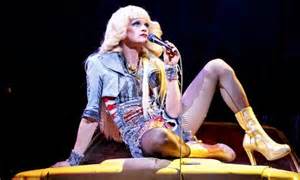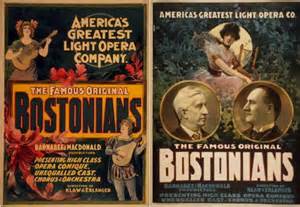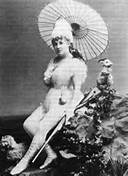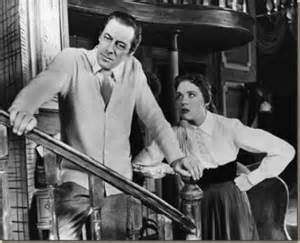Broadway musicals have a language all their own. Over more than 150 years the American musical has defined and redefined itself. Here are some musical theatre terms that have been used to identify specific types of entertainments seen on European and American stages that have involved the use of music.
Opera and Related Works
When the American musical was born it was in the form of musical comedy. Prior to musical comedy, Americans went to the theatre to see musical entertainments such as operetta, opera, and opera bouffe. What do these terms designate?
- Opera: Although opera had been popular in Europe, it never developed the same type of following in the U.S. Opera focuses on serious themes, is entirely sung, and calls for singers who have developed a high level of skill. Movement or dance is minimal and there is no dialogue as everything is sung. Operas tended to be sung in a language other than English, and the themes were often foreign, literally, to Americans.
- Operetta: These musical entertainments were light-hearted and focused on comedy and singing. There was a plot
and character interaction, however there tended to be very little dialogue. Dance was a minimal aspect of operetta and lyrics were amazingly witty. The tunes tended to be easy to remember. Gilbert and Sullivan were the masters of this form, creating popular works such as H.M.S. Pinafore, The Yeoman of the Guard, and The Pirates of Penzance.
- Opera Bouffe: This type of opera includes elements of farce, satire, comedy, and parody. It was a product of 19th century France and is best illustrated by works created by Jacques Offenbach, such as Orpheus in the Underworld.
Popular Musical Entertainments
There were many other types of popular musical entertainments in 19th century America such as burlesque, extravaganza, and pantomime. Here’s a look at these entertainments.
- Burlesque: A burlesque is the comic treatment of a literary work. It included many musical numbers, plenty of scenes, and lots of comedy. The burlesque featured scantily clad, curvaceous women. Two of the most popular burlesques in mid-19th century America were Evangeline and Adonis. The English troupe that made burlesque popular in the U.S. was Lydia Thompson and her British Blondes.
- Extravaganza: This was an entertainment that focused on the big effect. There was music and a story, but the big effect was prominent. If you wanted to see live horses on stage, huge, ancient settings, and huge casts, then the extravaganza was your type of entertainment. The most popular extravaganza was the Kiralfy Brothers production of Excelsior.
- Pantomime: This type of entertainment, which gained notoriety in the U.S. through American entertainer and clown George L.Fox, was extremely popular in England. Pantomimes included fairly random plots, dance numbers, broad humor, music, and a lot of visual spectacle. They tend to have a dreamlike, fairy feeling. Fox’s Humpty Dumpty was a big hit throughout America.
- Minstrel Show: This type of entertainment, which included skits, musical and dance numbers, a chorus and three front men (The Interlocutor, Tambo, and Bones), used popular music of the time, slapstick comedy, and witty exchanges between performers. Originally, minstrel shows featured white performers in black face. These shows were performed in the U.S. starting around the 1830s and were popular throughout much of the 19th century.
Musical Comedy and the Book Musical
The American stage is noted for creating the modern musical, which was first classified as musical comedy. Here are some quick notes on musical comedy and the book musical.
- Musical Comedy: In the U.S., musical comedy focused on American characters and themes, included dance numbers, tended to be light on plot, and featured a lot of songs. One of the first hit musical comedies was A Trip to Chinatown.
- Book Musical: The book musical, which came to prominence in 1927 when Kern and Hammerstein’s Show Boat was produced on Broadway, features three dimensional characters, a complex plot and numerous subplots, and music and dance that work in connection with the book to create a show of high literary quality. There are many important book musicals, including Oklahoma!, Guys and Dolls, Pal Joey, and My Fair Lady. The last great book musical is said to be Fiddler on the Roof.
More Musical Theatre Terms
In our second installment focusing on musical theatre, we will look at some of the job positions that are associated with the art form as well as terms that describe some specific aspects of the musical.




